Main drive question
How can we improve the study and modulation of human brain dynamics?
Answer
- Using non-invasive electrical stimulation tools and dazzling to modulate brain activity and connectivity in a controlled way.
- Developing and validating methodological approaches for processing brain functional and structural data, with an emphasis on connectivity, and potential applications including automated diagnosis, preoperative mapping and rehabilitation.
- Investigating the biological basis of social behaviour – cooperation, empathy, bonding, social salience and reward learning – using multimodal pharmaco-psychophysiological approaches, including functional neuroimaging.
Coordinator
Research projects
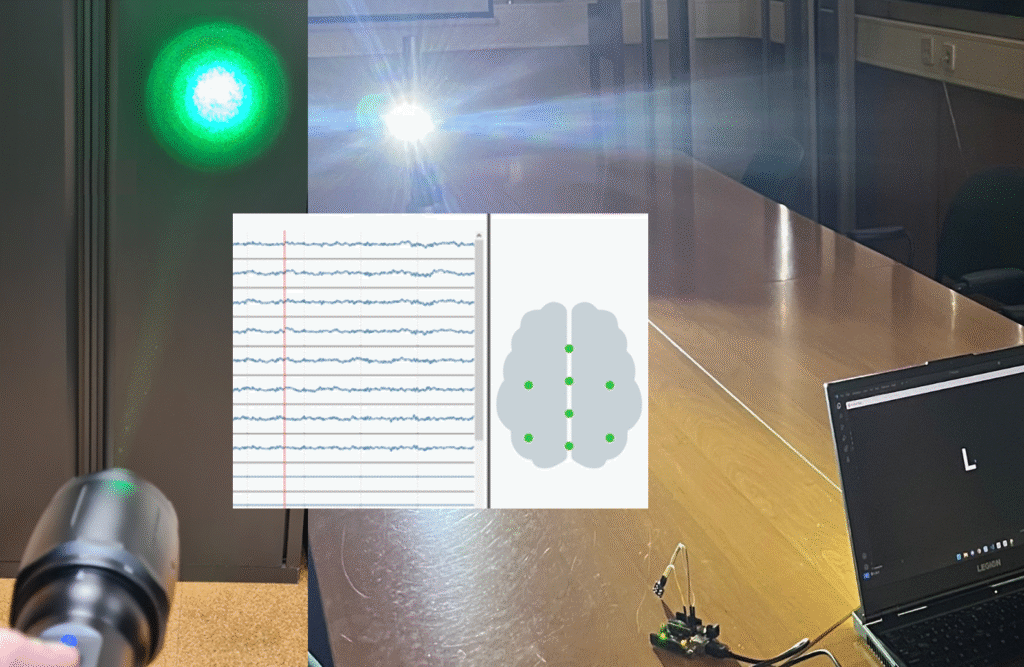
Evaluation of the effect of laser dazzle (on humans)
The widespread access to high-power, high-directional light sources (such as laser pointers, but also some flashlights) has led to increased concern about the potential effects of their use. Our goal is to develop tools that allow testing and evaluating the impact on the brain response to light glare situations.
What do we do? design of laser dazzlers, simulation, EEG signal processing
Collaborations with: Instituto Politécnico de Setúbal (Portugal), Belgium Royal Military Academy (Belgium), FCT/UNL (Portugal), NATO Science & Technology Organization (STO)
Interested in knowing more about this topic? Contact people: João Coelho, Hugo Ferreira, Anna Letournel
Accepting Masters and PhDs!
Open-source Software Development to Promote Diffusion MRI Reproducibility
Advanced diffusion MRI techniques enable 3D reconstruction of brain structural connectivity and provide novel biomarkers of microstructural alterations in health and disease. However, clinical adoption of these methods remains limited, partly due to the lack of accessible tools for data acquisition and processing. To address this gap, we are developing reference open-source implementations of cutting-edge diffusion MRI techniques within large collaborative efforts, such as the Diffusion Imaging in Python project (dipy.org), to promote reproducibility and widespread use.
What do we do? open-source software development, brain modelling, signal and imaging processing, machine learning.
Collaborations with: Indiana University (USA), University of Southern California (USA), Technical University of Denmark (Denmark), Instituto Superior Técnico (Portugal)
Interested in knowing more about this topic? Contact people: Rafael Neto Henriques
Accepting internships, Masters and PhDs!
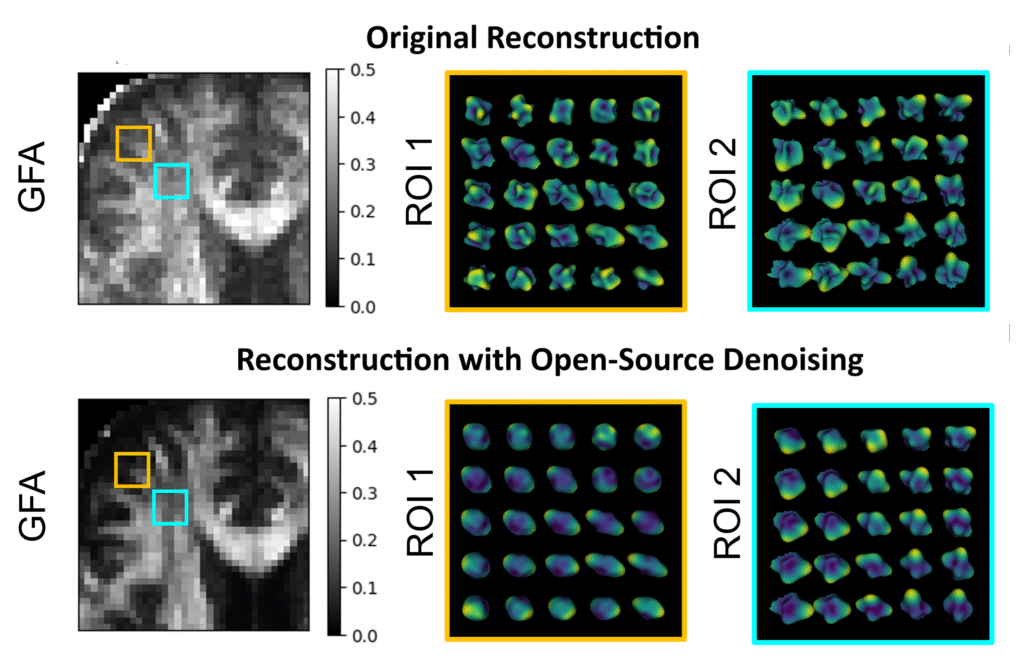

Neurofeedback in VR Serious Games for Pediatric Phobia Therapy
This project investigates how neurofeedback can be integrated into VR serious games to support therapy for children with phobias. It emphasizes adapting game difficulty to cognitive load through real-time brain activity monitoring. The project contributes to a digital twin–based framework for designing adaptive therapeutic tools, enhancing engagement and effectiveness for children with special needs.
What do we do? VR games
Collaborations with: NovaLinks (FCT/UNL), Instituto Politécnico de Setúbal (Portugal)
Interested in knowing more about this topic? Contact people: Anna Letournel, Sofia Fernandes
Accepting internships and Masters!
Brain Functional Connectivity: exploring Deep Learning approaches and alternative connectivity metrics for a better diagnosis and understanding of pathologies
We are exploring innovative Deep Learning architectures, such as Graph Neural Networks, and alternative connectivity metrics and approaches, including mutual information and deconvolution, in order to build computational tools that will enable us to improve the understanding and diagnosis of pathologies such as autism spectrum disorders or Parkinson’s disease.
What do we do? deep learning, functional connectivity, functional magnetic resonance imaging
Collaborations with: Instituto Superior Técnico (Portugal)
Interested in knowing more about this topic? Contact people: Alexandre Andrade

Accepting internships, Masters and PhDs!
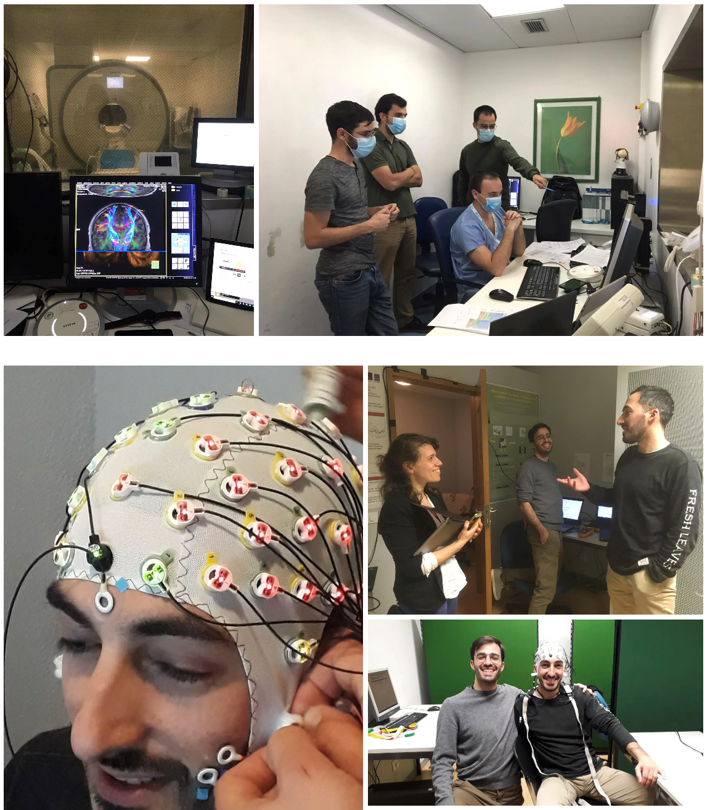
The Neurobiology of Social Cognition
Understanding the neurochemistry and circuitry mediating social cognition is key to treat a large range of neuropsychiatric disorders – as social deficits are often present at their origin and often do not subside with treatment. We study healthy humans, and individuals with psychiatric conditions, with structural and functional neuroimaging (MRI and DTI), eye-tracking, pupilometry, skin conductance, EEG, ECG, genetic and proteomic testing and computational modelling – in double blind placebo-controlled pharmacological administration using psychological stimuli in a range of social cognition tasks including naturalistic contexts such as social dance.
What do we do? genetics, neuropharmacology, neuroimaging, psychophysiology, reinforcement learning, social cognition, emotion recognition
Collaborations with: King’s College London (UK), Emory University (USA), IST (Portugal), ISCTE (Portugal), Champalimaud Neuroscience (Portugal), ISPA (Portugal), and The Netherlands Institute for Neuroscience (The Netherlands), NIMH (USA)
Interested in knowing more about this topic? Contact people: Diana Prata
Accepting internships, Masters and PhDs!
Multimodal biomarkers to predict the onset and prognosis of neuropsychiatric illnesses
Psychiatry and, to a lesser extent, neurology are still fields of medicine that take very little advantage of quantitative, biological and objective measurements – with a lot of trial-and-error and one-size-fits-all therapeutics. We develop pattern recognition algorithms that can statistically predict the level of personalized risk of each new patient. To train these algorithms, we use pre-existing samples (free online or our own) containing neuroimaging and also genetic, psychological, environmental and clinical data.
What do we do? genetics, neuroimaging, clinical biomarkers, recognition algorithms
Collaborations with: King’s College London (UK), Radboud University Nijmegen (The Netherlands), University College London (UK), University of Munich (Germany)
Interested in knowing more about this topic? Contact people: Diana Prata
Accepting internships, Masters and PhDs!
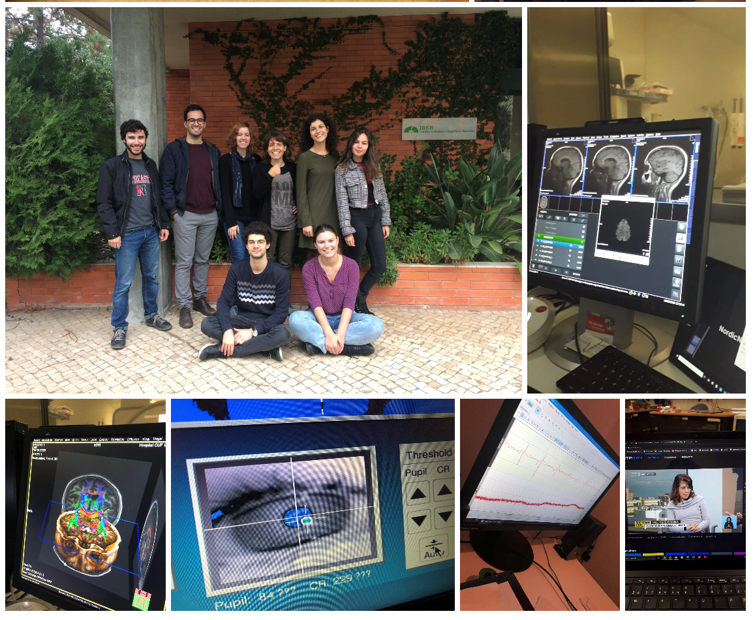
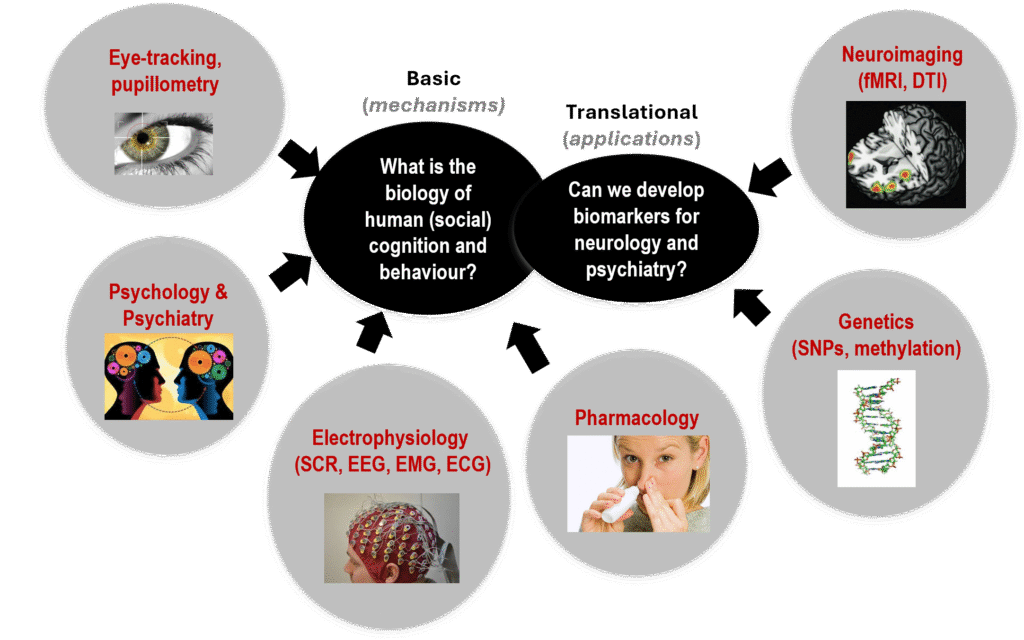
Genetic underpinnings of human brain function and structure
Several aspects of brain function and structure are known to be highly heritable but little is known about what specific genes contribute to them. For example, while specific genetic variations have been associated with cognitive abilities and susceptibility to many psychiatric illnesses, we still do not know how they operate or increase risk. We use existing databases of controls and bipolar disorder and schizophrenia patients, in whom MRI data (functional and structural MRI, Positron Emission Tomography (PET) and Diffusion Tensor Imaging –DTI) and genotyping (including genome-wide GWA) human data has been collected, to correlate genetic with neuroimaging measurements in healthy humans, and patients with schizophrenia and bipolar disorder.
What do we do? genetics, neuroimaging, brain connectivity, dopamine synthesis, fMRI, sMRI, DTI, PET.
Collaborations with: King’s College London (UK), University College London (UK)
Interested in knowing more about this topic? Contact people: Diana Prata
Accepting internships, Masters and PhDs!
NOISyS: Neuroadaptive Systems for Brain Restoration Using VR and BCI
This project explores how combining virtual reality (VR) and brain-computer interfaces (BCI) can create inclusive rehabilitation systems for motor and cognitive recovery. It focuses on using neuroimaging and neural markers to adapt VR training to patient needs.
What do we do? virtual reality, brain-computer interfaces
Collaborations with: Instituto Superior Técnico (Portugal), Hospital da Luz de Lisboa (Portugal), Centro de Medicina de Reabilitação de Alcoitão (Portugal), Instituto Politécnico de Setúbal (Portugal)
Interested in knowing more about this topic? Contact people: Anna Lethournel
Accepting Masters!
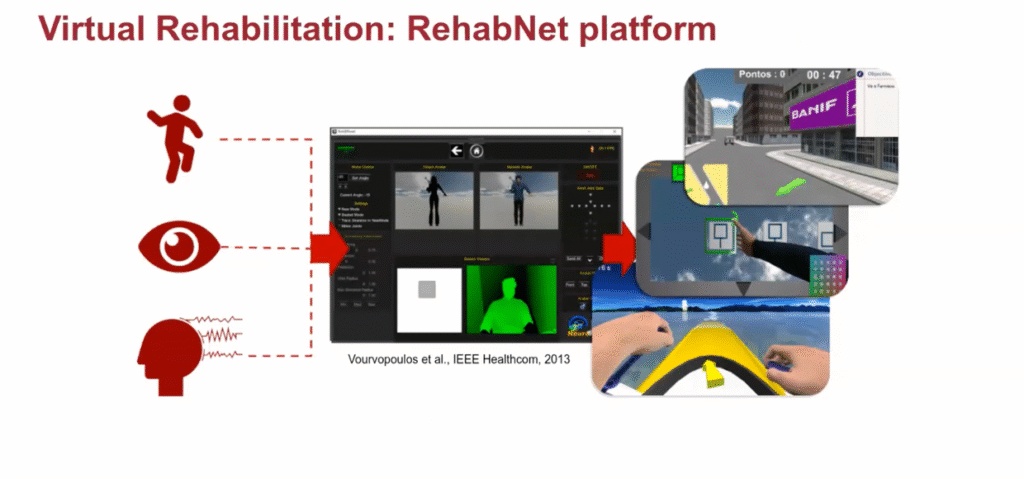
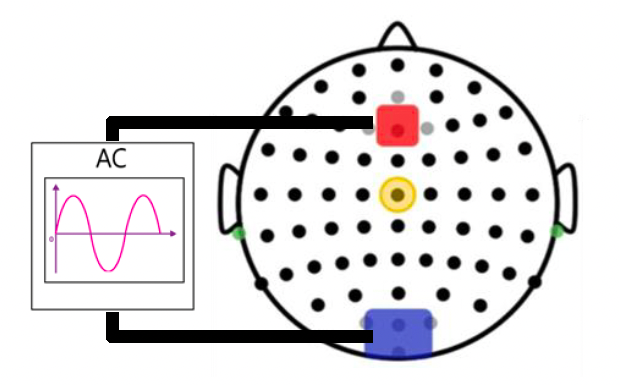
Stim4Dex: Transcranial Electrical Stimulation for Fine Motor Recovery in Neurological Conditions
This project investigates how transcranial electrical stimulation (tES) can modulate sensorimotor networks to restore fine motor skills in Parkinson’s disease (PD). It combines neurophysiological assessment through EEG and EMG with personalized stimulation protocols.
What do we do? transcranial direct current stimulation (tDCS), EEG, EMG
Interested in knowing more about this topic? Contact people: Anna Lethournel, Sofia Fernandes
Accepting internships and Masters!






